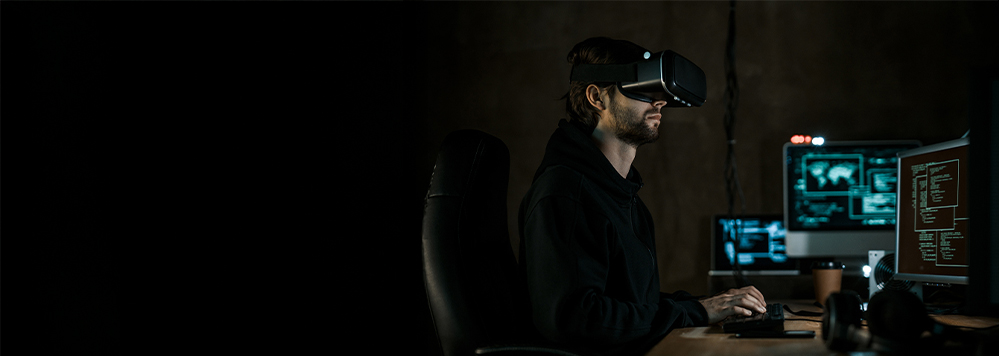"Your mental health is everything – prioritise it. Make the time like your life depends on it, because it does." — Mel Robbins
Mental health, the cornerstone of our emotional and psychological well-being, often gets relegated to the shadows, eclipsed by physical health concerns. Yet, the numbers paint a stark picture: mental health challenges are a global epidemic, casting a long shadow over millions of lives.
- Half of us will grapple with a mental health condition at some point in our lives – Harvard Medical School and the University of Queensland
- Depression, a dark cloud of despair, engulfs roughly 280 million people worldwide, regardless of age, background, or social standing – World Health Organization
- Suicide, a tragedy claiming over 700,000 lives annually, ranks as the fourth leading cause of death among 15-29-year-olds – World Health Organization
- The economic cost of mental disorders, a heavy burden on society, stands at a staggering $1 trillion per year, driven by lost productivity and healthcare expenses – World Health Organization
These dark statistics demand a fundamental shift in our approach to mental health.
William Glasser, a maverick in the field, saw the dead end of reliving the past in traditional therapy. He yearned for a brighter path, one where individuals grasped the reins of their present and future. From this was born Choice Therapy. It recognised our choices as keys to fulfilling core needs. Choice Therapy became the seedbed for Reality Therapy, an empowering approach rooted in personal responsibility and active decision-making.
However, the ocean of mental health demands a diverse armada of approaches. Here's a glimpse of other modalities:
- Acceptance and Commitment Therapy (ACT) teaches unwanted thoughts and feelings while directing energy towards valued actions.
- For some individuals, Cognitive Behavioral Therapy (CBT), which helps restructure unhelpful thinking patterns, might be a more suitable approach.
- Mindfulness-based interventions like meditation, which foster present-moment awareness and acceptance, can cultivate present-moment awareness and emotional regulation.
Your journey to mental well-being is like a fingerprint – uniquely yours. Now, there is another option at your disposal, a revolutionary digital compass: Virtual Reality therapy (VRT). This marriage of therapy and technology unlocks new avenues for exploring needs, practising choices, and fostering well-being.
Understanding VRT
Virtual reality’s journey into mental health began in the 1990s, with a landmark study by Rothbaum, a psychologist and Hodges, a tech guru. Published in The American Journal of Psychiatry, it showed VR's promise in tackling acrophobia (fear of heights), paving the way for its broader use in therapy.
From tackling heights in the lab to scaling virtual mountains in therapy, VRT's journey has come a long way. It is like stepping into a therapist's office with limitless digital landscapes for walls, and a multitude of simulated environments to treat various mental health conditions.
VRT use cases
Stressed about public speaking? Step into a virtual auditorium and nail your presentation, conquering those butterflies for good!
Think you can master assertiveness with your boss in a virtual boardroom? VRT dares you to try!
Ever dreamt of scaling Mount Everest? With VRT, you can face your fears and reach the summit, pixel by pixel.
Feeling lost? VRT can build your confidence and guide you on a brighter path.
These are just a few glimpses into the diverse applications of VRT.
Here's what makes VRT unique:
- Immersive experiences: Virtual worlds feel incredibly real, engaging multiple senses and triggering emotional responses similar to real-life situations. This immersive quality allows clients to confront challenges and practise new behaviours in a safe and controlled environment.
- Tailored scenarios: Therapists can customise virtual environments to cater to specific needs and anxieties. From social gatherings to public speaking scenarios, the possibilities are endless, allowing for targeted therapy interventions.
- Enhanced engagement: Compared to traditional talk therapy, VRT can be more engaging and interactive, promoting active participation and potentially making the therapeutic process more enjoyable and effective for some clients.
- Practice makes progress: VRT provides a safe space for clients to rehearse desired behaviours and responses in simulated scenarios without real-world consequences. This repetitive practice fosters confidence and improves coping skills.
VRT serves as a versatile therapeutic tool, addressing a diverse spectrum of conditions and challenges, including stress and pain management, helping cope with depression, confronting and overcoming phobias, as well as providing support for individuals grappling with post-traumatic stress disorder (PTSD).
While VRT's possibilities are vast, it's crucial to approach it with realistic expectations. Just like any therapeutic tool, it isn't a one-size-fits-all solution. However, its rapid growth and adaptability suggest VR's potential to become a vital player in the future of healthcare, alongside established therapeutic practices.
With a market already worth $628 million and projected to reach a whopping $6.2 billion by 2029, growing at a mind-boggling 38.7% per year, the answer seems clear: virtual worlds have healing potential.
Stepping into a healthier tomorrow
At Infosys BPM, we elevate 'Health is Wealth' from a proverb to a powerful action plan. Our cutting-edge healthcare solutions empower individuals to live healthier, more fulfilling lives, driving a prosperous future for all.







